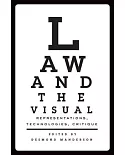This book takes a fresh and wide-ranging look at the origins of the architectural conservation movement in the United Kingdom. Distinguished contributors consider how the modern concept of
heritage emerged in the nineteenth century, how politics as well as art and design played a role in the creation of a historic buildings culture, and how the writings and activities of
designer William Morris and architect Philip Webb shaped thinking about conservation.
Chapters of the book address such diverse topics as the place of historic buildings in Morris’s thinking, the relation of the Arts and Crafts Movement to Victorian ideas of heritage, the
distortion of Morrisian ideals in early twentieth-century New England, and the emergence of an urban vs. rural conservation culture. Drawing on extensive historical research, the book casts
new light not only on the history of the Conservation Movement but also on its role today.





















